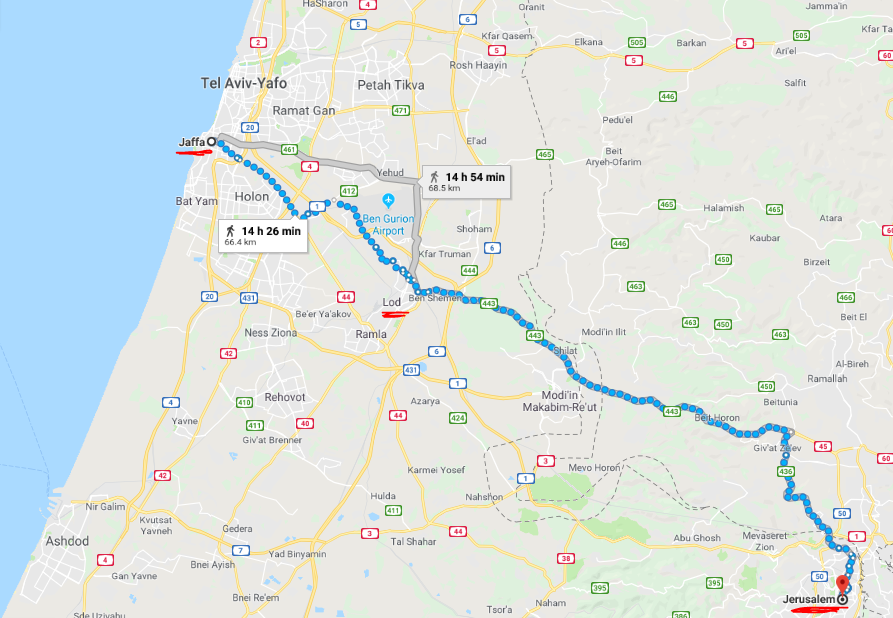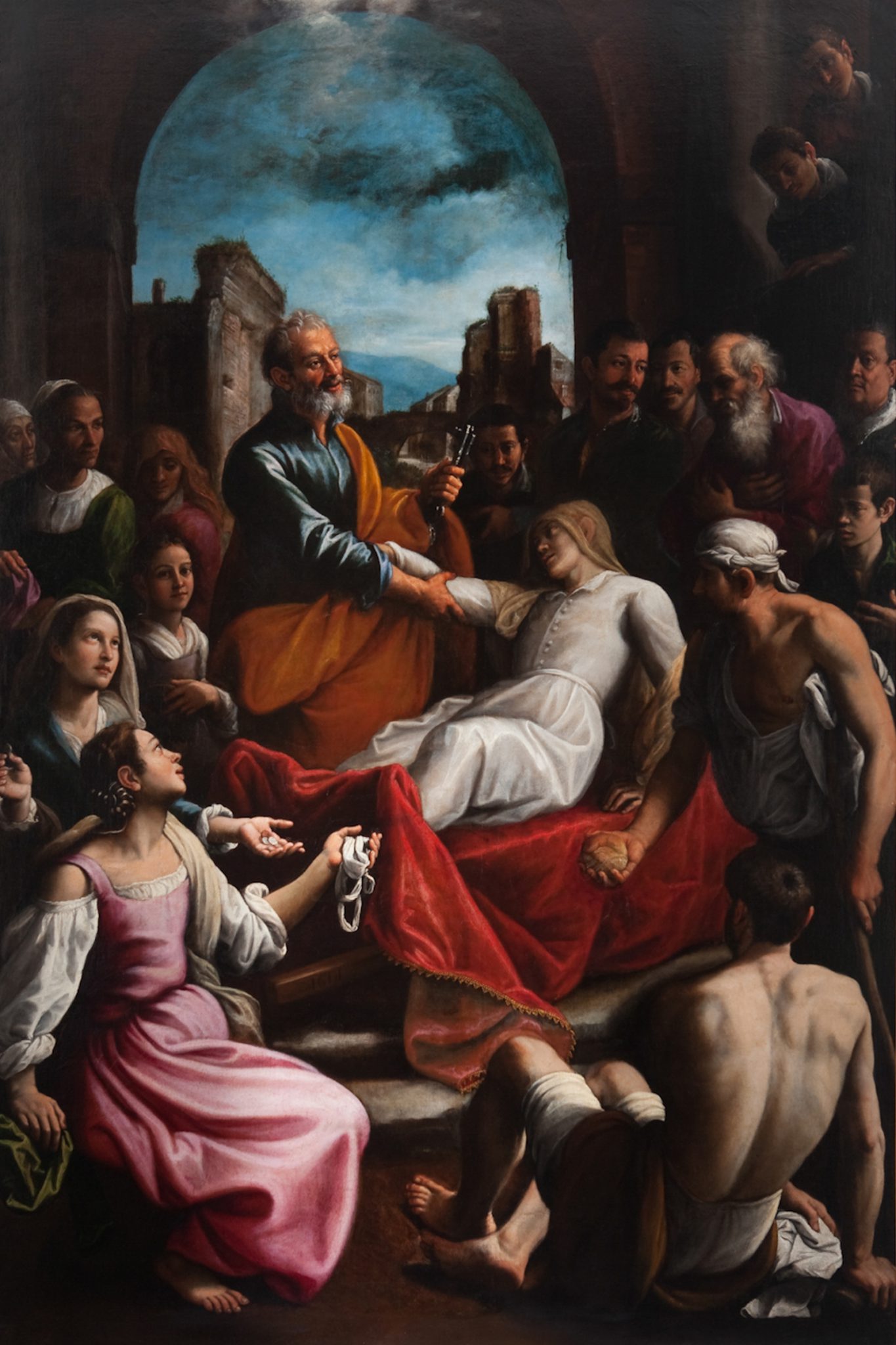Aeneas and Dorcas
Acts 9:32-43
32 As Peter traveled about the country, he went to visit the Lord’s people who lived in Lydda. 33 There he found a man named Aeneas, who was paralyzed and had been bedridden for eight years. 34 “Aeneas,” Peter said to him, “Jesus Christ heals you. Get up and roll up your mat.” Immediately Aeneas got up. 35 All those who lived in Lydda and Sharon saw him and turned to the Lord.
36 In Joppa there was a disciple named Tabitha (in Greek her name is Dorcas); she was always doing good and helping the poor. 37 About that time she became sick and died, and her body was washed and placed in an upstairs room. 38 Lydda was near Joppa; so when the disciples heard that Peter was in Lydda, they sent two men to him and urged him, “Please come at once!”
39 Peter went with them, and when he arrived he was taken upstairs to the room. All the widows stood around him, crying and showing him the robes and other clothing that Dorcas had made while she was still with them.
40 Peter sent them all out of the room; then he got down on his knees and prayed. Turning toward the dead woman, he said, “Tabitha, get up.” She opened her eyes, and seeing Peter she sat up. 41 He took her by the hand and helped her to her feet. Then he called for the believers, especially the widows, and presented her to them alive. 42 This became known all over Joppa, and many people believed in the Lord. 43 Peter stayed in Joppa for some time with a tanner named Simon.
Observations and Reflections
Luke’s story telling is often in blocks and is not tightly connected to chronology. This is especially true of Acts 9. When did Peter visit Lydda? We don’t know. What was going on beforehand that prompted a trip there? We don’t know. How long was he in Lydda? We don’t know. The point of these blocks of stories is to illustrate a theological point and to build the legend/character of the apostles.
Two themes can be found in the healing stories of Aeneas and Dorcas (Tabitha), namely that just speaking to them was all they needed to be healed and that the kingdom was expanding. In the gospels, Jesus and the disciples often laid hands on people and healed them but Jesus was the only one that would heal with the spoken word. However, we now see that the disciples are able to speak to the sick and heal them just like Jesus did. The over-arching theme of the kingdom expansion can be seen throughout acts, but it starts here in chapter 9. This is why most of the events in the book thus far has been in or around Jerusalem and the end of the book has the people and gospel spread out all over the Mediterranean.
In Acts 9, the gospel message has now exited Jerusalem and is beginning to spread to other cities. In this case, Joppa and Lydda. Lydda was a small town about 50 miles NW of Jerusalem. It was a thoroughly Jewish city just on the edge of the flat plains between Judea and Samaria.[1] 1 Chronicles notes that Lod/Lydda was built by the sons of Elpaal.
Eber, Misham, Shemed (who built Ono and Lod with its surrounding villages. (1 Chronicles 8:12)
The city was rebuilt following the Babylonian exile in 587 BCE (ending 537 BCE). The city’s inhabitants that returned from the exile are listed in the quasi census in Nehamiah 7:6-65.
the men of Ramah and Geba, 621; 31 the men of Michmas, 122; 32 the men of Bethel and Ai, 123; 33 the men of the other Nebo, 52; 34 the sons of the other Elam, 1,254; 35 the sons of Harim, 320; 36 the men of Jericho, 345; 37 the sons of Lod, Hadid and Ono, 721; 38 the sons of Senaah, 3,930. (Nehemiah 7:30-38)
The location of Joppa is listed in Acts as “near” Lydda, which tells the reader a little about ancient travel. For the modern traveler it’s just a few minutes in a car. However, walking would a matter of hours. To walk from Lydda to Joppa the walker is looking to travel about 5 hours. To modern people that is a very long walk and we would not use the term “near” to describe it. In ancient times it’s just another day. However, it’s likely that many travelers made the trip on the back of a donkey. Whether or not Peter traveled from Jerusalem to Joppa on a donkey is unknown. Given that he leaves Joppa in Acts 10 and arrived in Caesarea the following day and that distance (between Joppa and Casesarea) was about the same as the distance between Jerusalem and Joppa, we can assume that he like walked both trips since traveling on donkey would have shorted the trip. The average 1st century traveler on foot would walk about 7 hours each day which coincides with the time it would take to cover the distances listed in Acts, given the time-frame.

The city of Joppa is much more recognizable to current day Bible readers than Lydda, as it’s the city that Jonah went to in order to board a ship to escape the call of the Lord (Jonah 1:3). Compared to Lydda, Joppa was a much larger city and a it was also a sea-port. Despite being a major port for commerce and travel, Joppa was still thoroughly Jewish. It was contended for during the Greek invasion and then again during the Roman occupation. Because the city was so important to commerce, the Jews fought ferociously against the Greeks, recapturing the city city under the leadership of Simon and John Hyrcanus.[2] After the Greek, the Romans occupied the lands along the sea but made Caesarea their man port because Joppa could not support the large amount of use needed by the Roman and Caesarea could. It’s Jewishness is likely a contributing factor in why the Romans decided to destroy the city just before destroying Jerusalem in 70 AD. They destroyed nearly all the major cities of the Jews after the revolts in 68 CE..[3]
The amount of time Peterl was in Lydda and Joppa is not clearly stated by Acts. However, since many people were converted Joppa and “all” the people in Lydda who witnessed the miracle converted, it’s safe to say that Peter probably stuck around long enough to help them establish a church or at least long enough to ensure they were properly taught the gospel message.
1. [Encyclopedia Judaica: Lydda. Accessed February 26, 2019. https://www.jewishvirtuallibrary.org/lydda.]↩
2. [The History Of The Destruction Of Jerusalem: Book I, Chapter 2, p2-8. http://dustoffthebible.com/wp-content/uploads/2017/10/Complete-Works-of-Josephus.pdf]↩
3. [The History Of The Destruction Of Jerusalem: Book I, Chapter 9. http://dustoffthebible.com/wp-content/uploads/2017/10/Complete-Works-of-Josephus.pdf]↩
4. [xxx]↩

First Peter prayed in the room with Tabitha and Paul prayed the night before casting the demon out of the slavegirl who was testifying that Paul was telling the way to salvation but apparently saying it again and again so Paul had trouble preaching and cast out the fortunetelling demon so her masters could not make money from her, I hope they let the slavegirl go after she was freed of the demon by Paul who had prayed before casting the demon out.